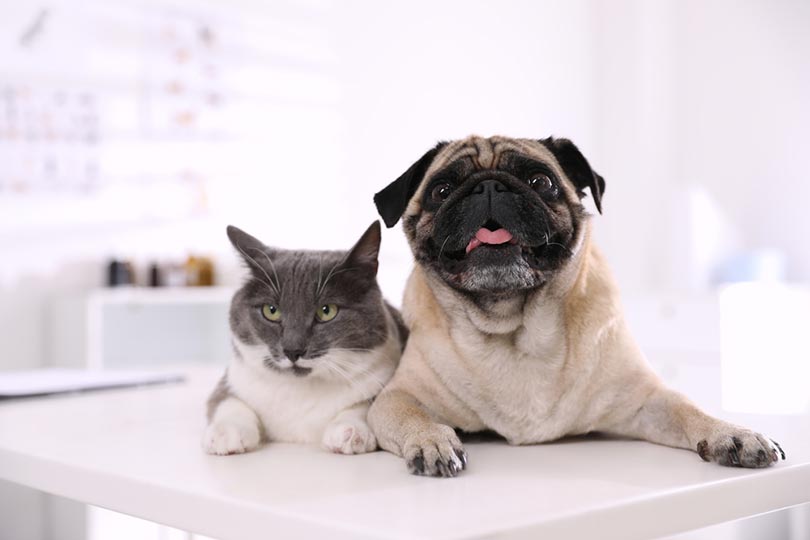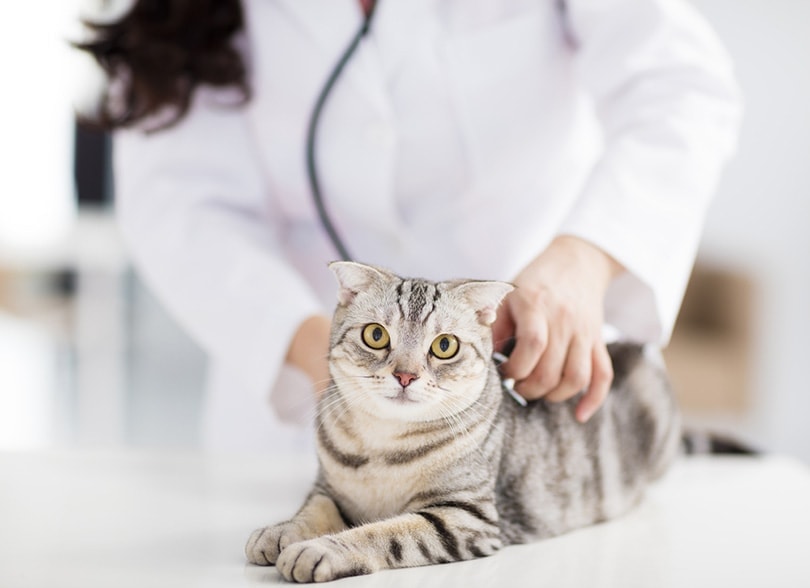How Much Does ASPCA Pet Insurance Cost? 2024 Update

Updated on

As a nation, Americans are pet lovers. In 2022, it was reported that 69 million households own at least one dog, and 45 million homes own at least one cat. That’s a lot of pets, and all those pets will have to visit a vet once a year and once in their lifetime for an emergency (costing $2,000-$4,000).
Pet insurance is one of the most important purchases you can make for your furry friend, as it not only gives you peace of mind should the unthinkable happen but also takes the monetary pressure away and saves you from making pressured decisions based on what treatment you can and can’t afford for your beloved pet.

The Importance of Pet Insurance
With health care costing $800 per year for healthy dogs, it’s no surprise that pet insurance has increased in the US. For cats, the cost of one kitten in its first year can be as much as $1,174, with $600 being the yearly cost. With cats now routinely living over the age of 15, you can see how this adds up.
Dogs are man’s best friend, and the lifetime cost of a dog is often sorely underestimated. The cost of a small dog over its lifetime is around $15,051 (as smaller breeds live up to 15 years), with medium dogs costing about $15,782 and large dogs $14,480, respectively.
This is a tremendous amount of money for anyone, and with the rising prices of everything from pet food to boarding, making sure your pet has adequate insurance coverage is a must. But what insurance should you go for?
Getting a good balance between the amount of coverage, deductible, and premium is important. We’ll detail precisely what you can expect to pay to get this essential safety net for your pet.
Other Top Rated Pet Insurance Companies
How Much Does ASPCA Pet Insurance Cost?
Looking at the West Coast, East Coast, and the Midwest, we have quotes from the ASPCA’s insurance website to give you an accurate idea of what it may cost to insure your pet.
Several factors can affect the price of all pet insurance policies, including those from the ASPCA. These include the age and breed of your pet, the species of your pet, where you live in the US, and what level of coverage you require.
Broken down, we compared the costs of insurance for a dog vs. a cat and the costs of the same level of coverage for a standard across the East and West coasts and the Midwest. We also looked at differences in breed and coverage level.
The table below uses a male Labrador Retriever that is 5 years old and a male mixed breed cat of 5 years old as a baseline for comparison across the US, showing the prices for the same level of coverage. This is an average of the Complete Coverage plan and Accident only, with a $4,000 annual limit, $250 deductible, and an 80% coverage
| Pet Type | East Coast | Midwest | West Coast |
| Dog (Labrador Retriever, 5 YO) | Complete Coverage: $67.63 | Complete Coverage: $52.87 | Complete Coverage: $57.89 |
| Accident Only: $26.03 | Accident Only: $19.17 | Accident Only: $21.54 | |
| Cat (mixed breed, 5 YO) | Complete Coverage: $22.64 | Complete Coverage: $15.46 | Complete Coverage: $19.42 |
| Accident Only: $16.11 | Accident Only: $11.42 | Accident Only: $13.51 |
This data shows that coverage for the same pet at the same age, species, breed, and level of coverage that lives on the East Coast will cost almost $10 more a month for the same animal living on the West Coast.
The age of your pet factors in and affects the price of the insurance significantly, as shown in the quotes we collected for the same breed of cat and dog living in the same area but classed as “elderly” (10 years for a dog, 11 years for a cat):
| Pet Type | East Coast | Midwest | West Coast |
| Dog (Labrador Retriever, 10 YO) | Complete Coverage: $135.20 | Complete Coverage: $123.46 | Complete Coverage: $158.63 |
| Cat (mixed breed, 11 YO) | Complete Coverage: $54.78 | Complete Coverage: $43.61 | Complete Coverage: $63.86 |
We also looked at differences in the breed. For a 5-year-old Persian cat (a brachycephalic breed prone to respiratory and eye problems), the standard Complete Coverage plan would cost $28.87 on the East Coast and rise to $81.41 for an 11-year-old.
Additional Costs to Anticipate
There are different elements to consider when taking out an insurance policy on your pet. ASPCA has very customizable coverage, which is excellent for tailoring your plan to fit you and your pet perfectly, but the language and technical parts can be challenging to navigate.
When looking at insurance, the percentage of reimbursement is essential, as the lower the rate of reimbursement is, the lower the monthly premium will be. This is great for some but can come as an additional cost in the unfortunate event you have to claim your pet’s medical treatment, as you’d have to cover the rest of the cost.
Using our Labrador quote as an example, if your 5-year-old Lab needed surgery that would cost $1,000, and your ASPCA policy covers 80% (assuming the deductible has been paid – we’ll cover that below), this means ASPCA would pay $800, with the remaining $200 being paid by you.
This is adjustable, as are most other parts of the ASPCA Complete coverage plan, but it will affect your monthly premium. For our Labrador, that would mean that if 90% were reimbursed, the monthly premium would be $68.11.
The same is true for the annual limit and the annual deductible. The annual limit is the maximum amount the policy will pay for vet bills in that insurance period. The period usually runs for 12 months; for example, under this plan, our lab has an annual maximum of $4,000.
If any of his treatments were to take the total cost over that amount, the owner would pay the rest. This can be a shock if an unfortunate vet visit comes to more than you have covered, so consider this factor when adjusting your plan.
The deductible is less of a surprise but still an additional cost. You’ll have to pay the annual deductible towards the vet bill before the ASPCA pays out; in our Labrador’s case, this is $250. This is also adjustable, with a higher deductible lowering the monthly cost. For example, a $500 deductible for our Labrador would bring the premium down to $46.05.
How Long Should I Insure My Pet For?
Pet insurance is essential for the lifetime of your pet. It’s a commitment to keep them healthy. At certain points in their lives, illness, injury, or accidents will happen that will need treatment, which an ASPCA insurance policy can help with.
For puppies in the US, soft tissue trauma is the most common reason their owners take them to see a vet, with each visit to treat a soft tissue injury costing $200–$400 for X-rays to rule out skeletal injury and up to $2,500 for wound treatment.
In older dogs, poisoning is the number one reason owners take their dogs to the emergency vet, with top offenders being theobromide (chocolate), onion, or grape toxicity. The cost of treatment for poisoning can range from $50 to $5,000, depending on exactly which treatment is needed for dogs and cats.
In cats, the most common reason for an emergency vet visit is trauma from a high-rise fall (or ‘high-rise syndrome’), which depending on severity, can cost up to $6,000 for treatment.
Older animals have certain conditions they’ll likely experience (as we all do in old age), with arthritis being the most commonly treated illness in old dogs in the US (which costs $324 per year to treat) and chronic kidney disease in cats, which is likely to affect 30% of cats over the age of 10 and costs $649 per year.
What Does ASPCA Pet Insurance Cover?
ASPCA has a good level of coverage for both cats and dogs, and it isn’t as exclusionary as some other providers either. Here’s a quick rundown of what is and isn’t covered, but this is not an exhaustive list. The policy page and sample policy have a full list of exclusions.
- Accidents such as injuries, foreign bodies, and poisoning
- Illnesses such as cancer and diabetes
- Hereditary and congenital diseases that show symptoms later in life
- Alternative therapy like hydrotherapy or acupuncture
- Behavioral issues
- Chronic conditions
- Medications and Prescriptions
- Prescription food
- Microchipping
- Pre-existing conditions
- Non-prescription food or food for weight loss
- Breeding-related issues
- cosmetic procedures, e.g., tail docking
This plan also doesn’t cover preventative treatments such as vaccines. However, the preventative care add-on can be included for an additional cost each month.
The accident-only plan covers accidents such as injuries, poisoning, foreign bodies, or trauma only.
Conclusion
ASPCA pet insurance covers a wide range of problems for your pet and has flexible, tailored care to suit your and your pet’s needs. There are additional add-ons to explore for extra coverage, such as preventative treatments. While the price is affected by breed, age, and geographical location, the simple-to-use online quote system can inform you exactly how much it would cost to insure your furry, four-legged friend.
Featured Image Credit: New Africa, Shutterstock








